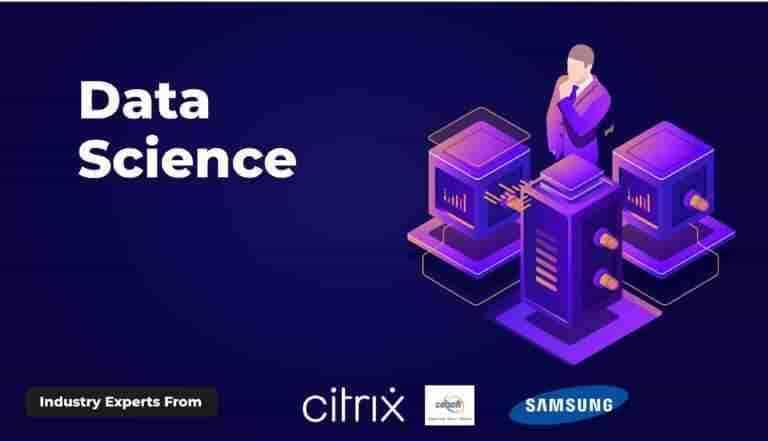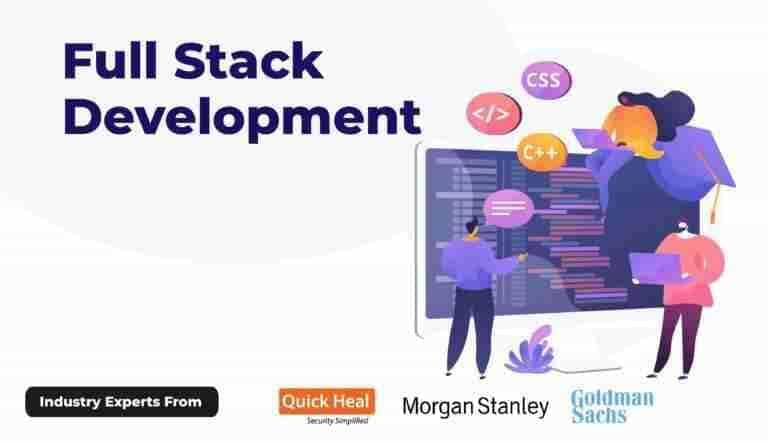Why Python Is the Most In-Demand Programming Language Today



In today’s fast-paced and technology-driven world, programming languages have become the backbone of innovation, enabling the creation of cutting-edge solutions that shape industries and improve lives. Among the vast array of programming languages,Python has emerged as the leader, celebrated for its simplicity, versatility, and powerful capabilities. Whether you’re a seasoned developer, a beginner taking your first steps in coding, or even a non-technical professional seeking to automate tasks, Python is the language of choice.
What sets Python apart is its ability to bridge the gap between complex technology and human understanding. Its clean and intuitive syntax makes learning to code less daunting, allowing even those with no prior experience to pick it up quickly. Beyond its beginner-friendly nature, Python is a powerhouse in various fields, includingdata science,artificial intelligence (AI), machine learning (ML), web development and automation . As industries increasingly rely on data and digital transformation, Python’s role becomes more critical than ever.
Furthermore, Python’s rise to prominence is not just due to its technical prowess but also its vast community of developers who constantly contribute to its growth. From creating open-source libraries and frameworks to offering mentorship and support, this thriving ecosystem ensures that Python stays ahead of the curve. Companies like Google, Netflix, Facebook, and Spotify trust Python to power their operations, highlighting its reliability and scalability in real-world applications.
This article dives deep into why Python has become indispensable, examining its key features, the advantages of being an interpreted language, and its transformative impact across diverse industries. Whether you’re aiming to build web applications, analyze massive datasets, or create intelligent systems, Python equips you with the tools to succeed in today’s competitive tech landscape.
Python is a high-level, interpreted, and dynamically typed programming language designed to prioritize code readability and simplicity. It supports multiple programming paradigms, including procedural, object-oriented, and functional programming, and is widely used in fields such as web development, data science, artificial intelligence, and automation.

Python is one of the most popular programming languages today, and its features contribute to its widespread adoption. Here’s a breakdown of its key characteristics:
Python’s simple and intuitive syntax makes it ideal for beginners. The language is designed to be easy to read and write, which reduces the learning curve. Unlike many other programming languages, Python programming language focuses on simplicity and readability, allowing developers to focus on solving problems rather than wrestling with complex syntax.
Python emphasizes readability with a clean and straightforward syntax. Indentation is used to define code blocks, making the structure of the program clear and reducing the need for braces or semicolons. This readability is one of Python’s key strengths, making code easy to maintain and understand.
Python comes with a vast collection of libraries and frameworks that simplify many common tasks. From data analysis (with libraries like NumPy and pandas) to web development (using frameworks like Django and Flask), Python has a solution for almost every application. These libraries help developers save time by providing pre-built modules for common tasks.
Python is platform-independent, meaning you can write code on one operating system (like Windows) and run it on another (such as macOS or Linux) without needing to modify the code. This makes Python an excellent choice for building applications that need to work across different platforms.
Python uses dynamic typing, meaning you don’t need to specify the type of a variable when you declare it. This flexibility allows for more concise and flexible code, but it also means that types are determined during runtime, which can lead to fewer errors when writing code.
Python supports both object-oriented programming (OOP) and functional programming paradigms. This makes it a versatile language that can be used to write structured code using classes and objects, as well as code based on functions and immutability. Developers can choose the approach that best fits the problem at hand.
Python integrates well with other languages and technologies. It can be used to interact with C, C++, and Java code, and it also supports connecting to databases, web services, and more. Python’s ability to integrate with other tools and systems makes it a popular choice for building large, complex applications.
Python is scalable and can be used to develop both small scripts and large, complex applications. While it may not be as fast as some low-level languages, it is still capable of handling large-scale projects, especially with the help of optimizations such as multi-threading or using external libraries.
Python is an open-source language, meaning its source code is freely available for modification and distribution. It has a large and active community that continuously contributes to its development. This open-source nature ensures that Python remains updated and secure, and developers can easily find help or collaborate on projects.
Python is ideal for rapid prototyping and development. Its simple syntax and extensive libraries allow developers to quickly write, test, and iterate on code. This makes it particularly popular in industries where speed of development is crucial, such as startups and research.
Python is an interpreted language, which means its code is executed line by line by an interpreter, rather than being compiled into machine code. Here’s why this is significant:
Python iscentral to many emerging technologies, particularly in the realms of artificial intelligence (AI), machine learning (ML), and data science . These fields require tools and libraries that can handle large amounts of data and complex calculations. Python’s simple and clean syntax makes it the language of choice for both newcomers and professionals in these areas.
Thedemand for Python developers has seen an incredible surge over the past decade. Python’s ability to be used in so many areas means that it’s a highly sought-after skill in the job market. Here’s why Python developers are in high demand:
Python’s importance in education and research continues to grow. As the demand for data-driven decision-making and automation increases, Python plays a significant role in academic and scientific fields:

Python continues to be one of the most sought-after programming languages, opening a wide range of career paths in diverse industries. Its versatility, combined with its ecosystem of powerful libraries, makes Python professionals highly valuable. Below are some key career opportunities for Python experts, along with their average salaries:
Python’s frameworks like Django and Flask make it ideal for building web applications. Django is full-featured and scalable, while Flask is lightweight and flexible. Python’s clean syntax and extensive libraries help developers create secure and dynamic websites with ease.
Python excels in data analysis with libraries like Pandas, NumPy, and Matplotlib . It enables efficient data manipulation, statistical analysis, and visualizations, making it a go-to choice for data scientists across industries.
Python is the leading language for machine learning and AI . Libraries such as TensorFlow, Keras , and Scikit-Learn simplify building and training models for tasks like image recognition, NLP, and recommendation systems.
Python’s simplicity makes it ideal for automating repetitive tasks like file handling, system administration, or web scraping. Libraries like Selenium help automate web interactions, streamlining many manual processes.
While not the primary choice for high-end games, Python is used for simple game development with libraries like Pygame . It’s great for prototyping and building smaller, indie games, and is easy to learn for beginners.
Python is widely used in scientific research, offering libraries like SciPy and NumPy for mathematical modeling and simulations. It’s popular in fields like physics, biology, and engineering for algorithm development and data analysis.
Python is a go-to language for building cybersecurity tools. It is used for penetration testing, vulnerability scanning, and network analysis, with libraries like Scapy making it easier to develop security-focused applications.
Python supports IoT development, especially with tools like MicroPython that enable programming on microcontrollers. It’s used to develop smart devices, automate systems, and process data in real-time.
Python is used to create cross-platform desktop applications using Tkinter, PyQt , and wxPython . These libraries allow developers to build user-friendly graphical interfaces for various desktop applications.
Python is essential in finance for tasks like algorithmic trading and quantitative analysis. Libraries like Pandas and QuantLib enable efficient financial modeling, while Python’s flexibility allows for automated trading and real-time data analysis.
Python continues to be the top choice for developers due to its simplicity, versatility, and wide range of applications. It’s easy-to-learn syntax allows both beginners and experienced programmers to quickly develop complex applications. Python’s robust ecosystem of libraries and frameworks makes it suitable for everything from web development and data science to machine learning, AI, and cybersecurity.
The language’s strong community support and constant evolution ensure that Python remains relevant and adaptable to emerging technologies. Additionally, Python’s ability to work across platforms, its integration with other languages, and its presence in educational settings contribute to its sustained demand.
Python is popular for its simplicity, versatility, and wide range of applications in fields like AI, data science, and web development. Its extensive libraries and frameworks make it a top choice across industries.
Python’s clear syntax, resembling natural language, makes it beginner-friendly. It’s easy to learn and has vast educational resources and a supportive community.
In finance, Python is used for data analysis, trading, and financial modeling. In healthcare, it helps with medical data analysis, patient management, and imaging.
Python developers are in demand due to the language’s versatility in fields like web development, AI, and data science, making them valuable across industries.
Python’s powerful libraries like TensorFlow and Scikit-learn simplify the development of AI and machine learning models, making it a go-to language for these fields.
Python’s quick development cycle and ease of use allow startups to build and test prototypes rapidly, making it ideal for creating minimum viable products (MVPs).
Python is widely used in education for teaching programming and in research for data analysis and simulations, thanks to its simplicity and scientific libraries.
Personalized learning paths with interactive materials and progress tracking for optimal learning experience.
Explore LMSCreate professional, ATS-optimized resumes tailored for tech roles with intelligent suggestions.
Build ResumeDetailed analysis of how your resume performs in Applicant Tracking Systems with actionable insights.
Check ResumeAI analyzes your code for efficiency, best practices, and bugs with instant feedback.
Try Code ReviewPractice coding in 20+ languages with our cloud-based compiler that works on any device.
Start Coding TRENDING
TRENDING BESTSELLER
BESTSELLER BESTSELLER
BESTSELLER TRENDING
TRENDING HOT
HOT BESTSELLER
BESTSELLER HOT
HOT BESTSELLER
BESTSELLER BESTSELLER
BESTSELLER HOT
HOT POPULAR
POPULAR